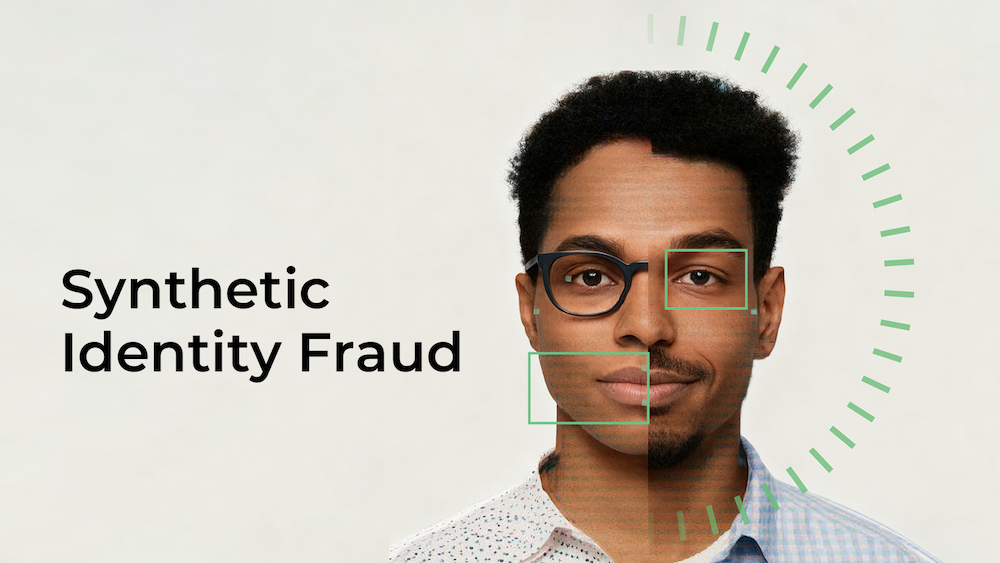Traditional Methods vs. Modern Approaches
Traditional Methods
In the early days of credit card fraud detection, rule-based systems and manual reviews were the primary methods used. Rule-based systems operate on predefined criteria to flag suspicious transactions. For instance, transactions exceeding a certain amount or originating from unusual locations might trigger alerts. While these systems provided a basic level of security, they were far from foolproof. The primary drawback was the high rate of false positives, where legitimate transactions were incorrectly flagged as fraudulent. This not only inconvenienced customers but also burdened businesses with unnecessary checks.
Manual reviews involved human analysts scrutinizing flagged transactions to determine their legitimacy. While this method added a layer of human judgment, it was inherently slow and labor-intensive. The delay in detecting and responding to fraud could result in significant financial losses. Moreover, as transaction volumes grew, manual reviews became increasingly impractical, highlighting the need for more efficient and accurate methods.
Modern Approaches
Modern approaches have emerged that leverage advanced technologies to enhance fraud detection capabilities, addressing the limitations of traditional methods.
Biometric Verification has revolutionized the way we authenticate users. Using unique biological traits such as fingerprints, facial recognition, or iris scans, biometric verification provides a highly secure method of confirming identity. The uniqueness of biometric data makes it extremely difficult for fraudsters to replicate or spoof, significantly reducing the risk of unauthorized access. For example, a fingerprint or facial scan is unique to each individual, making it a robust security measure that is both convenient and highly effective.
Another modern approach is tokenization, which involves replacing sensitive credit card information with a unique identifier or "token" with no exploitable value. During a transaction, the actual card data is never exposed; instead, a token is used to represent the card information. This minimizes the risk of intercepting or misusing sensitive data, adding an extra layer of security to payment processes. Tokenization is particularly effective in securing online and mobile transactions, with higher risk of data breaches.
Multi-Factor Authentication (MFA) adds yet another layer of security by requiring users to provide two or more verification factors to gain access to an account or complete a transaction. Common methods include SMS codes, app-based authentication, and even biometric verification. MFA significantly reduces the risk of unauthorized access because even if one factor is compromised, additional factors provide a robust defense against fraud. For instance, a fraudster might obtain a password, but without the second factor, such as a fingerprint or SMS code, they would still be unable to complete the transaction.
By integrating these modern approaches, businesses can significantly enhance their ability to detect credit card fraud, providing a more secure environment for themselves and their customers. These advanced methods improve accuracy and offer faster detection and response times, making them indispensable in the fight against credit card fraud.
Comparative Analysis of Fraud Detection Methods
Fraud detection is a critical component of modern business operations. With fraudulent activities becoming increasingly sophisticated, organizations must employ robust and efficient methods to identify and prevent financial losses. This comparative analysis explores various fraud detection methods, considering key criteria to determine their effectiveness.
Key Criteria for Comparison
- Accuracy: The ability to correctly identify fraudulent transactions while minimizing false positives and negatives.
- Speed: The time required to process and analyze data to detect fraud.
- Cost: The overall expenditure for implementing and maintaining the fraud detection system.
- Scalability: The system's ability to handle increasing volumes of data and transactions.
- Complexity: The level of technical expertise required for implementation and management.
- Adaptability: The system's capacity to evolve with changing fraud patterns.
Rule-Based Systems. Rule-based systems are essentially predefined conditions or rules that flag transactions as fraudulent if they meet specific criteria. These rules can be straightforward, such as blocking transactions from high-risk countries or those exceeding a certain spending limit, or more complex, involving multiple conditions and logical operators.
- Pros: Simple to implement, transparent, and cost-effective for basic fraud types.
- Cons: Limited adaptability to new fraud patterns, high false positive rates, and potential for rule-based evasion.
Statistical Analysis. Statistical analysis involves applying statistical methods to transaction data to identify anomalies. Techniques such as outlier detection, correlation analysis, and hypothesis testing can be used to spot suspicious activities.
- Pros: Effective in detecting patterns, relatively low cost, and can handle large datasets.
- Cons: Requires statistical expertise, may not detect complex fraud schemes, and can be sensitive to data quality.
Machine Learning. Machine learning involves training algorithms on historical transaction data to learn fraud-associated patterns. Techniques such as decision trees, random forests, neural networks, and support vector machines are commonly used.
- Pros: High accuracy, adaptability to new fraud patterns, and ability to handle complex fraud schemes.
- Cons: Requires significant data and computational resources, potential for black-box nature, and may require expertise in data science.
Behavioral Analytics. Behavioral analytics involves analyzing customer behavior patterns to identify deviations that may indicate fraudulent activity. This includes monitoring purchase history, device usage, location, and transaction frequency.
- Pros: Effective in detecting account takeover and identity theft, low false positive rates.
- Cons: Requires extensive data collection and processing, may be challenging to implement for new customers.
Network analysis examines relationships between entities involved in transactions, such as customers, merchants, and payment processors. By analyzing connections within the network, it identifies patterns of suspicious activity.
- Pros: Effective in detecting organized fraud, can uncover complex fraud schemes.
- Cons: Requires advanced data analysis techniques, computationally intensive, and may require significant data preparation.
Understanding Credit Card Fraud
The digital landscape has transformed how we conduct financial transactions, with credit cards becoming an indispensable tool for everyday purchases. However, as technology advances, so too do the methods employed by fraudsters. Once a relatively straightforward criminal activity, credit card fraud has evolved into a complex and sophisticated challenge for individuals, businesses, and financial institutions alike..
How Do Fraudsters Get Credit Card Numbers?
Fraudsters use various techniques to steal credit card information, including phishing, skimming, and data breaches.
Phishing is a deceptive practice where fraudsters trick individuals into providing their credit card information by posing as legitimate entities. This often involves sending emails or messages that appear to be from reputable companies, such as banks or online retailers. These messages typically contain urgent requests for personal information or direct recipients to fake websites designed to capture their data. For example, a phishing email might cause an issue with the recipient's bank account and prompt them to enter their credit card details to resolve the problem. Despite increasing awareness, phishing remains a highly effective tactic due to its ability to exploit human trust and urgency.
Skimming involves using devices to capture credit card information during legitimate transactions. Skimmers are often placed on ATMs, gas station pumps, or point-of-sale terminals, where they can read the magnetic stripe on a card as it is swiped. The captured data is then used to create counterfeit cards or make unauthorized online purchases. For instance, a customer might unknowingly swipe their card at a compromised ATM, only to find later that their card information has been stolen. Skimming devices are becoming increasingly sophisticated, making them harder to detect with the naked eye.
Data breaches occur when hackers infiltrate companies' databases that store credit card information. These breaches can result in the theft of millions of credit card numbers in a single attack. High-profile examples include breaches at major retailers and financial institutions, where sensitive customer data was exposed due to company security systems vulnerabilities. The stolen data is often sold on the dark web, where other fraudsters can purchase it for use in fraudulent activities. The scale and impact of data breaches underscore the importance of robust cybersecurity measures.
Given the variety and sophistication of these tactics, both businesses and consumers need to remain vigilant and aware. Businesses should invest in advanced security technologies and regularly update their systems to protect against breaches. Conversely, consumers should be cautious about sharing their credit card information and stay informed about the latest fraud schemes.
By understanding how fraudsters obtain credit card numbers, we can better anticipate and counteract their efforts, enhancing our ability to detect credit card fraud and protect sensitive financial information.
TrustDecision's AI-Based Fraud Management Strategy
TrustDecision stands out as a leader in fraud management solutions, leveraging cutting-edge technologies to provide robust protection against credit card fraud. At the core of its strategy is the use of AI and machine learning. These technologies enable the system to analyze vast amounts of data in real time, identifying patterns and anomalies that may indicate fraudulent activity. TrustDecision's AI-driven approach ensures that businesses stay one step ahead of fraudsters by continuously learning and adapting to new fraud tactics.
Biometric Verification Integration
TrustDecision seamlessly integrates biometric verification into its fraud management system, enhancing security and user authentication. By utilizing unique biological traits such as fingerprints, facial recognition, and iris scans, TrustDecision ensures that only authorized users can access sensitive information or complete transactions. The accuracy and speed of biometric checks are unparalleled, providing instant verification without compromising user experience. This integration reduces the risk of unauthorized access and adds a layer of security that is difficult for fraudsters to bypass.
Flexible Integration Options
TrustDecision offers flexible integration options to ensure its fraud management solutions seamlessly fit into existing systems. Whether a business uses legacy systems or modern platforms, TrustDecision provides integration tools, including APIs, SDKs, and cloud-based solutions. This flexibility allows businesses to adopt advanced fraud detection technologies without overhauling their infrastructure. By offering customizable integration options, TrustDecision ensures that businesses of all sizes can benefit from its state-of-the-art fraud management capabilities.
TrustDecision's AI-based fraud management strategy combines advanced technologies like biometric verification, tokenization, and flexible integration options to provide comprehensive protection against credit card fraud. By leveraging these innovative features, businesses can enhance their security measures, reduce the risk of fraud, and provide a safer environment for their customers.
Conclusion
In an era where digital transactions are the norm, the importance of robust fraud detection cannot be overstated. As fraudsters continually evolve their tactics, businesses must stay ahead by adopting advanced strategies to protect themselves and their customers. Traditional methods, while foundational, are no longer sufficient to combat the sophisticated techniques used by modern fraudsters.
By leveraging cutting-edge technologies such as biometric verification, tokenization, and multi-factor authentication, businesses can significantly enhance their ability to detect credit card fraud. These modern approaches improve accuracy and offer faster detection and response times, making them indispensable in the fight against fraud.
We encourage businesses to embrace these advanced strategies and invest in comprehensive fraud management solutions. TrustDecision, with its AI-based approach and innovative features, offers a robust solution that can seamlessly integrate with existing systems, providing unparalleled protection against credit card fraud.
Explore TrustDecision's comprehensive fraud management solution to safeguard your business and provide a secure environment for your customers. By staying vigilant and adopting the latest technologies, you can effectively combat fraud and ensure the integrity of your financial transactions.

.jpeg)












